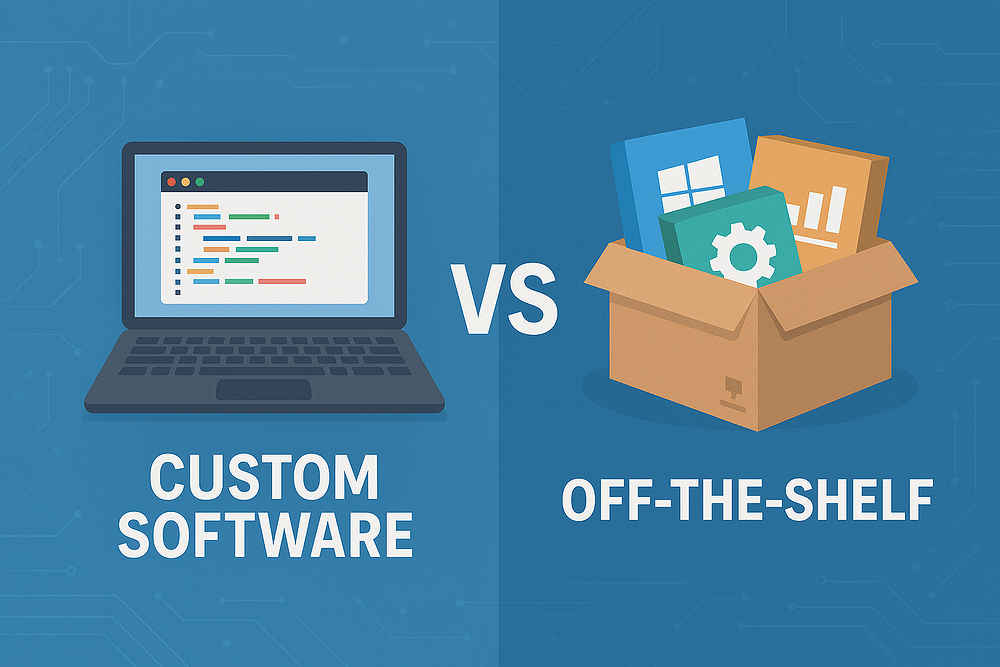5 Features Every Successful Web Application Needs in 2025

In 2025, the landscape of web application development has evolved dramatically, shaped by advances in technology, shifting user expectations, and increasing demands for performance and security. To ensure your web application not only stands out but also drives genuine engagement and delivers lasting value, it's essential to incorporate specific, future-proof features. Here are five key features every successful web application must have in 2025.
1. Seamless Cross-Platform Performance
Users in 2025 expect uninterrupted access to their favourite web applications across a myriad of devices—desktops, tablets, and smartphones alike. Achieving seamless cross-platform performance is no longer optional; it's mandatory. Leveraging responsive and adaptive design principles ensures your application delivers an optimal experience regardless of screen size or operating system.
The widespread adoption of frameworks like Blazor WebAssembly, React, and Angular continues to support the development of robust, responsive applications. Utilising technologies such as Progressive Web Apps (PWAs) also enhances user experiences through features like offline capabilities, push notifications, and rapid load times.
Additionally, ensuring accessibility compliance (WCAG 2.1 or higher) not only broadens your audience but is increasingly vital for legal compliance. Accessibility in your design from the ground up makes your web application universally usable, maximising reach and usability.
2. Advanced AI and Machine Learning Integration
Artificial Intelligence (AI) and Machine Learning (ML) integration are no longer just optional additions but core requirements for modern web applications. Users expect personalised experiences, intelligent suggestions, and automation of routine tasks. For instance, e-commerce applications increasingly leverage AI-driven product recommendations and predictive inventory management, while customer service apps integrate chatbots for 24/7 support.
AI-driven analytics also provide invaluable insights into user behaviour, allowing continuous optimisation of both user interface (UI) and user experience (UX). Platforms like Azure AI, Google AI Studio, and Amazon Web Services (AWS) offer powerful tools and APIs for developers to seamlessly integrate these capabilities into their web applications.
Embedding AI directly into the fabric of your application ensures that your product remains competitive, insightful, and engaging, fostering user retention and satisfaction.
3. Robust Security and Data Protection
Security concerns continue to dominate digital interactions in 2025, with heightened sensitivity around data privacy and protection. Users increasingly prioritise applications that demonstrate robust security protocols and transparent data management practices. Successful web applications integrate comprehensive security measures from development through deployment.
Ensuring compliance with global standards such as GDPR (General Data Protection Regulation) remains critical, alongside industry-specific guidelines. Modern applications use advanced encryption methods, rigorous authentication processes, and secure coding practices to safeguard user data. Implementing continuous security monitoring and real-time threat detection systems, supported by platforms like Azure Security Centre or AWS Shield, offers an additional protective layer that reassures users and builds trust.
A web application's reputation for robust security significantly enhances its appeal, creating loyal users confident in their digital safety.
4. Real-time Interactivity and Collaboration
Real-time functionality transforms static interactions into dynamic, engaging experiences. In 2025, successful web applications deliver interactive elements that foster immediate user engagement and collaboration. Features like live updates, real-time messaging, collaborative workspaces, and instant notifications have become the expected standard, particularly in productivity, social networking, and communication applications.
Web applications now commonly utilise technologies such as WebSockets, SignalR, and server-sent events to maintain open, continuous communication between server and client. Frameworks like Blazor Server, Node.js, and real-time databases such as Firebase support these interactive capabilities, enabling developers to deliver smooth, responsive user experiences.
Real-time interaction capabilities not only significantly enhance usability but also promote sustained engagement by enabling users to interact and collaborate effortlessly, regardless of location or time.
5. Sustainability and Efficiency
With increasing awareness and emphasis on sustainability, users in 2025 show preference towards eco-friendly and efficient web applications. Sustainable web design and development practices are more important than ever, involving optimising server resources, reducing data transfer, and improving overall energy efficiency.
Techniques such as image optimisation, efficient caching strategies, and code minification play vital roles in reducing bandwidth consumption and improving load times.
Moreover, selecting environmentally conscious hosting providers, powered by renewable energy sources, further demonstrates your commitment to sustainability.
Tools like Google's Lighthouse or WebPageTest offer actionable insights to identify and implement efficiency improvements, ensuring your application remains fast, lightweight, and environmentally responsible.
Prioritising sustainability doesn't just appeal to environmentally conscious users—it significantly reduces operational costs and enhances application performance, delivering long-term benefits.
Conclusion
As web applications continue evolving into integral components of everyday life, staying ahead in a competitive digital environment demands adoption of these critical features.
Emphasising seamless cross-platform functionality, robust AI and ML integration, rigorous security practices, real-time interactivity, and sustainability will ensure your web application remains not only relevant but genuinely transformative in the user experience it provides.
By focusing on these five key areas, your web application will thrive, delivering lasting value, and fostering sustained user engagement well beyond 2025.
Talk to us about your next project
Our team of experts is ready to help bring your ideas to life with solutions tailored to your business.
Get in Touch

